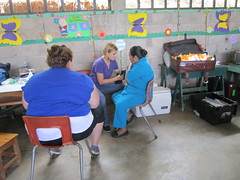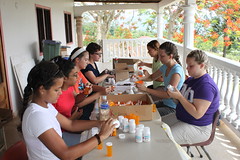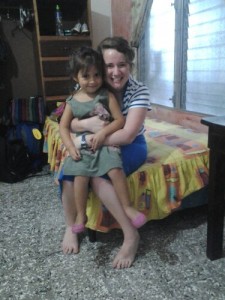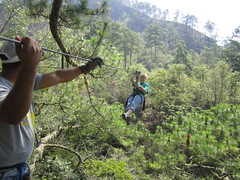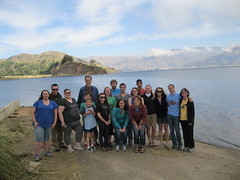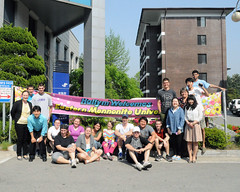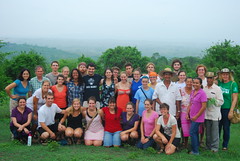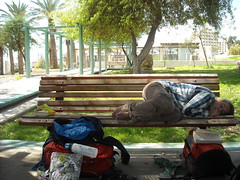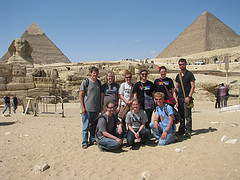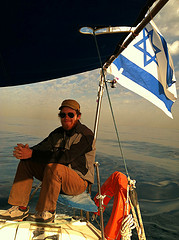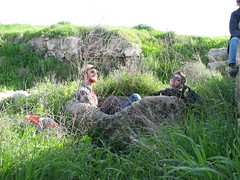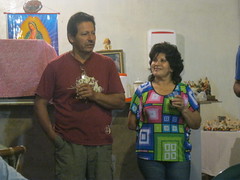 Today Milton (the man who owns the farm we are staying/working at) told us some stories about himself, and the interactions with politics and the island. It was quite interesting to see the parallels between the history of activism on the islands with the history of activism in Bolivia. At one point, the island residents took over the airport and shut it down. These actions reminded me a lot of the blockades in Bolivia. The people do not have the ability to take on the outside world directly, but they do have the ability to take away valuable things like tourism. It’s funny how a little island can quickly become relevant when they make that kind of noise. It was also crazy to see how the gentle and kind man was quoted internationally as a leader of all of it. I really wish that I could communicate with this man. I’m sure he is a wealth of information.
Today Milton (the man who owns the farm we are staying/working at) told us some stories about himself, and the interactions with politics and the island. It was quite interesting to see the parallels between the history of activism on the islands with the history of activism in Bolivia. At one point, the island residents took over the airport and shut it down. These actions reminded me a lot of the blockades in Bolivia. The people do not have the ability to take on the outside world directly, but they do have the ability to take away valuable things like tourism. It’s funny how a little island can quickly become relevant when they make that kind of noise. It was also crazy to see how the gentle and kind man was quoted internationally as a leader of all of it. I really wish that I could communicate with this man. I’m sure he is a wealth of information.
-Travis Riesen
Today we went back to the area in the woods we were at on our first 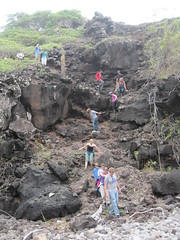 day here at la Finca (the farm we are at). We’re working on preserving scalatia trees and the areas where they grow. Once again today we cleared away blackberry bushes. Today was more fun than before when we cleared the bushes, because instead of working by myself, I worked with Marla. Not only were we more productive as a team, but we had some pretty great and funny conversations along the way. The highlight of my day though was watching Marla attempt to get on the donkey. At first she didn’t use enough force to jump on, then the second try was too much and she slid off the other side. When she and Alex finally got on though, it kept stopping, and at one point she fell off the back.
day here at la Finca (the farm we are at). We’re working on preserving scalatia trees and the areas where they grow. Once again today we cleared away blackberry bushes. Today was more fun than before when we cleared the bushes, because instead of working by myself, I worked with Marla. Not only were we more productive as a team, but we had some pretty great and funny conversations along the way. The highlight of my day though was watching Marla attempt to get on the donkey. At first she didn’t use enough force to jump on, then the second try was too much and she slid off the other side. When she and Alex finally got on though, it kept stopping, and at one point she fell off the back.
After lunch we began the sugar cane processing. To begin, we needed to carry over the sugar cane stalks that Milton had cut down. Instead of us individually carrying the stalks over to the processer, we made an assembly line and “passed them.” This was a lot easier, and more amusing for me because I got the throw them at Marla. At first we processed the green stalks, which Milton added lemons/limes to, and we were able to drink it and it was very delicious. We then processed a whole pile of browner canes. The process happens by Milton putting the cut canes in between the gears, and then people get on either side of the wooden bars and push it around in a circle. Once we were done and had a whole bucketful we came back for dinner. Afterwards they put the pot of sugarcane juice over the fire and cooked it into syrup. This cooking takes 3 hours. While we waited, Milton brought out a guitar, maraca and an instrument none of us had ever seen/played before…a horse jaw!
-Kaitlin Stauffer
I love the rain! Watching the low lying grey rain clouds role across the beach and lowlands was magnificent. I could see the rains sweep across the hills inching closer to our house. I was awestruck! I found the more I work here on the Galapagos, the more I connect with home. Today we continued to remove black raspberries from the fields that contain coffee and bananas. We also processed sugarcane for sugar in the raw. Both of which were labor and time intensive! I loved both projects! I could not imagine a better way to spend my time! When I’m at home I love working outside and being in the environment. Today we also discovered that our host, Milton, was the mayor of San Cristobal. I had no idea! He is so humble and down to earth, definitely not boastful or arrogant. I find that he is the epitome of a leader. I have discovered that I am adapting to not having continual access to my global community. At first I was struggling, like a drug addict going through a withdrawal. However it is nice to be disconnected and fully soak in the culture. I cannot wait to see what tomorrow holds.
-Blake Rogers
